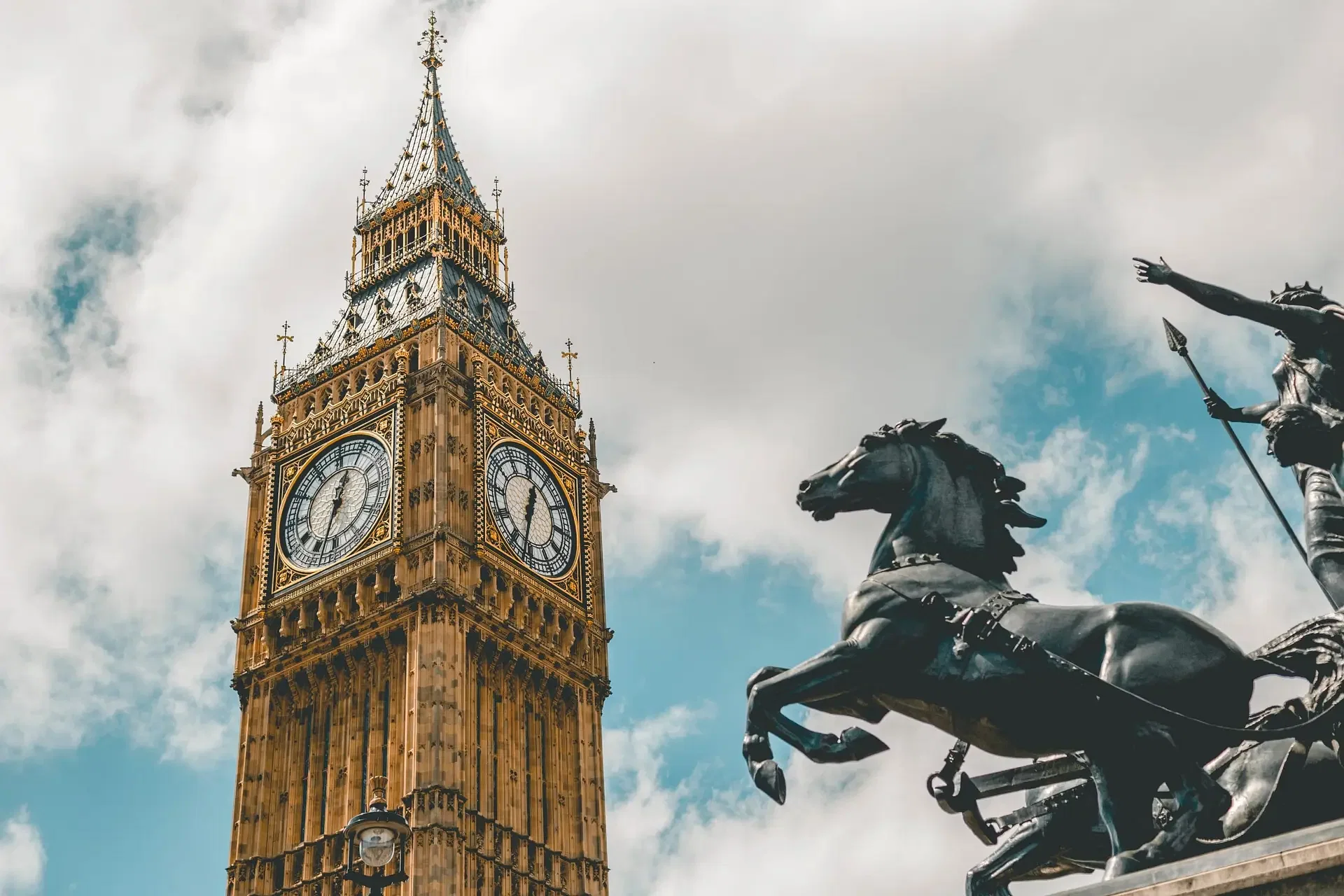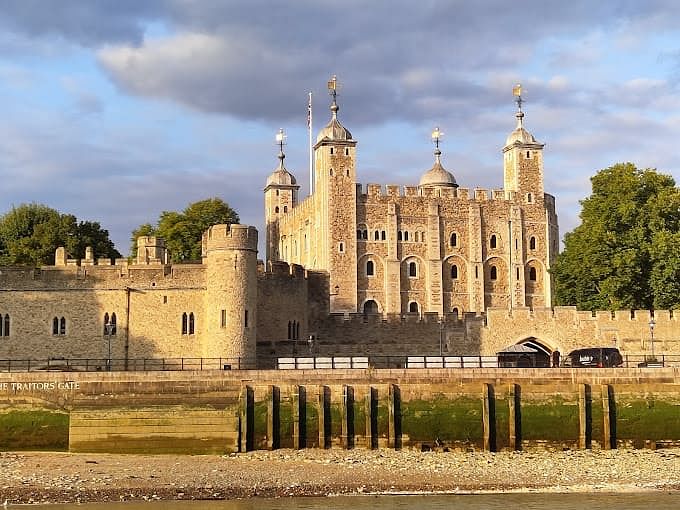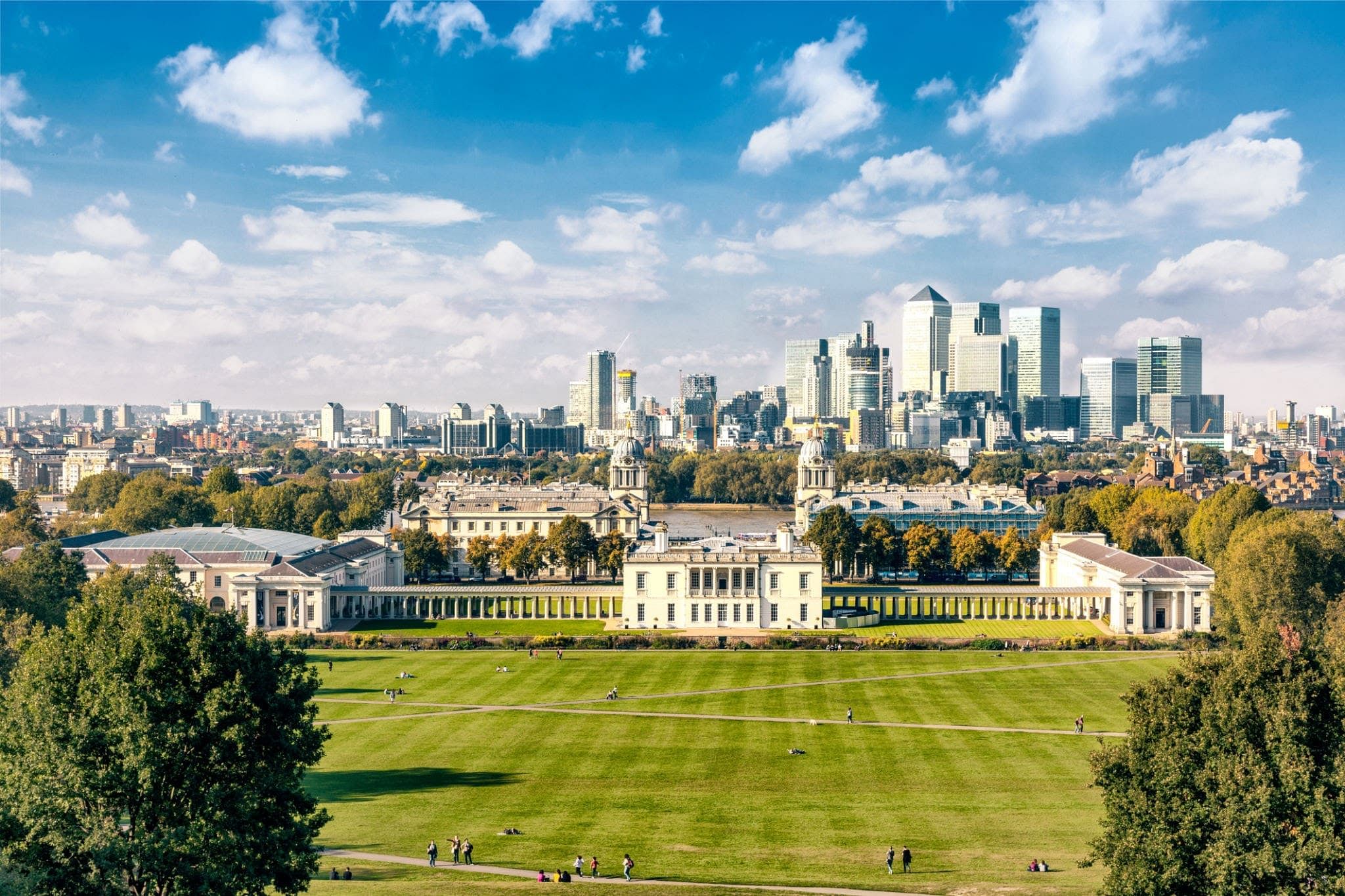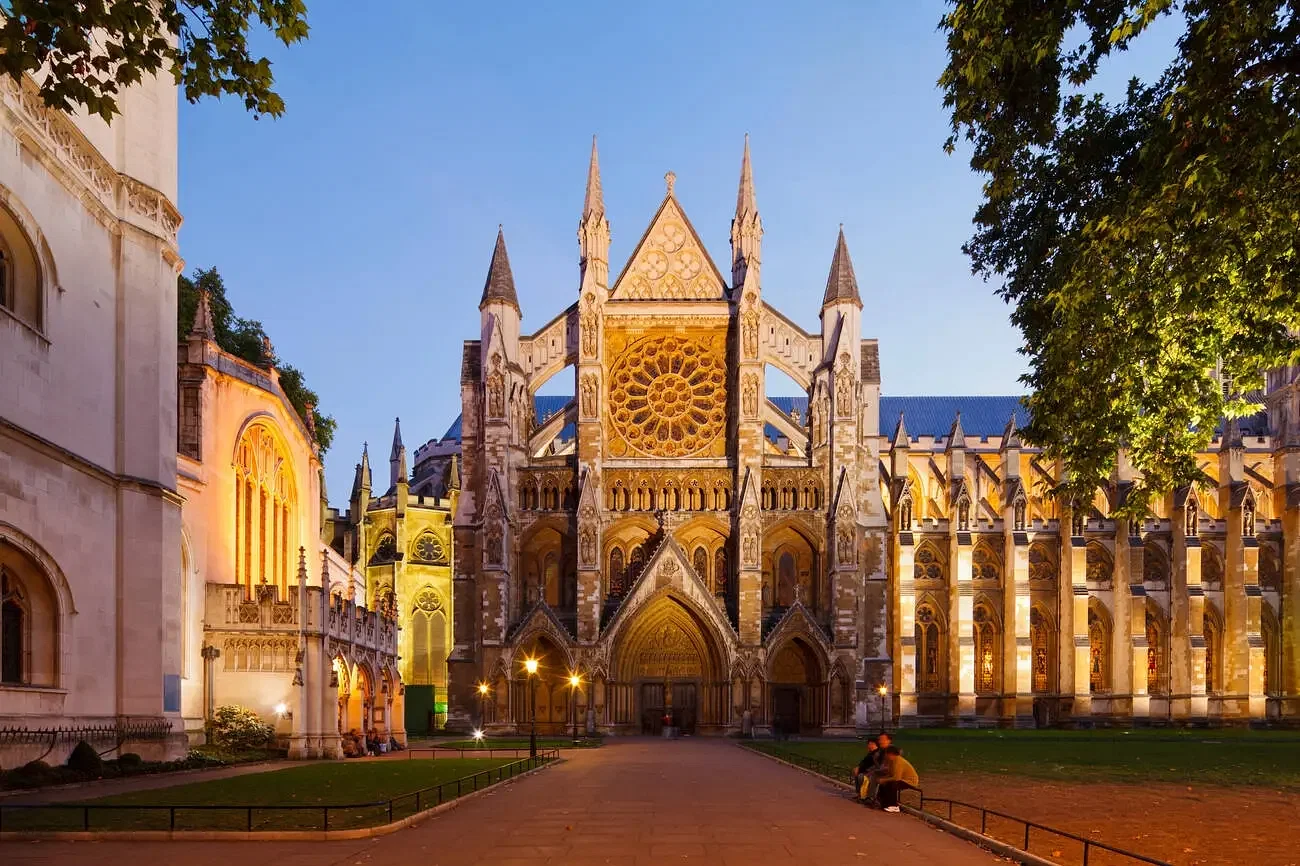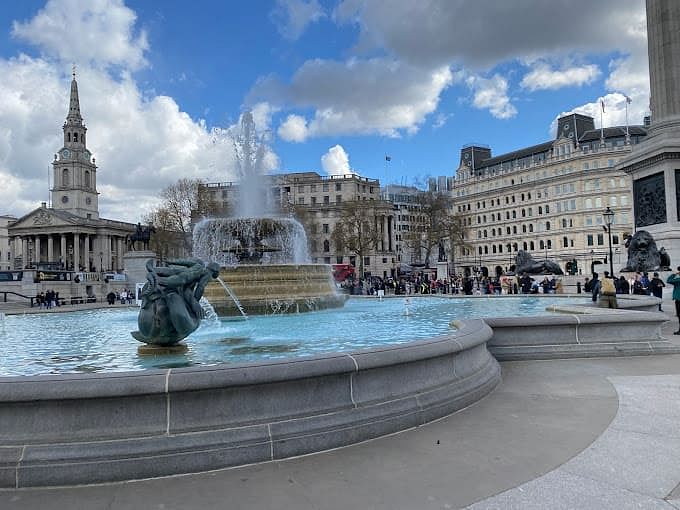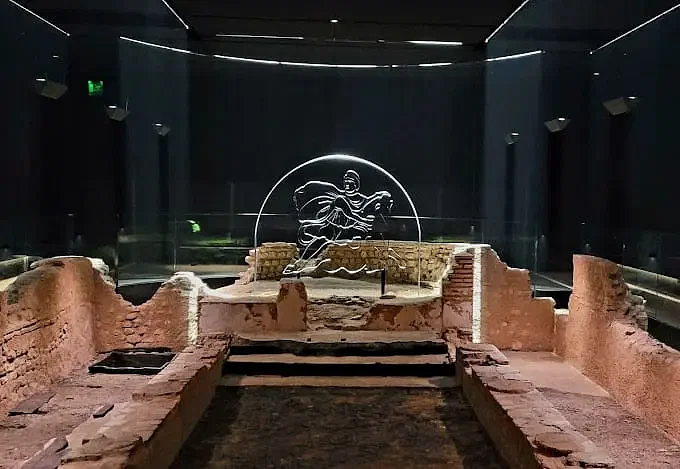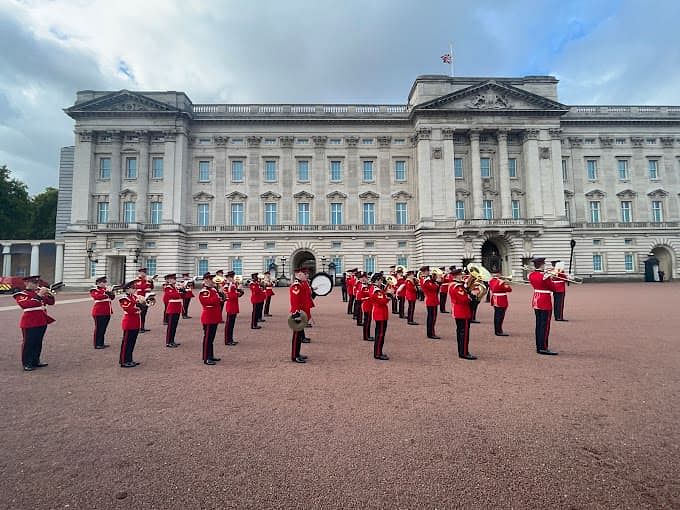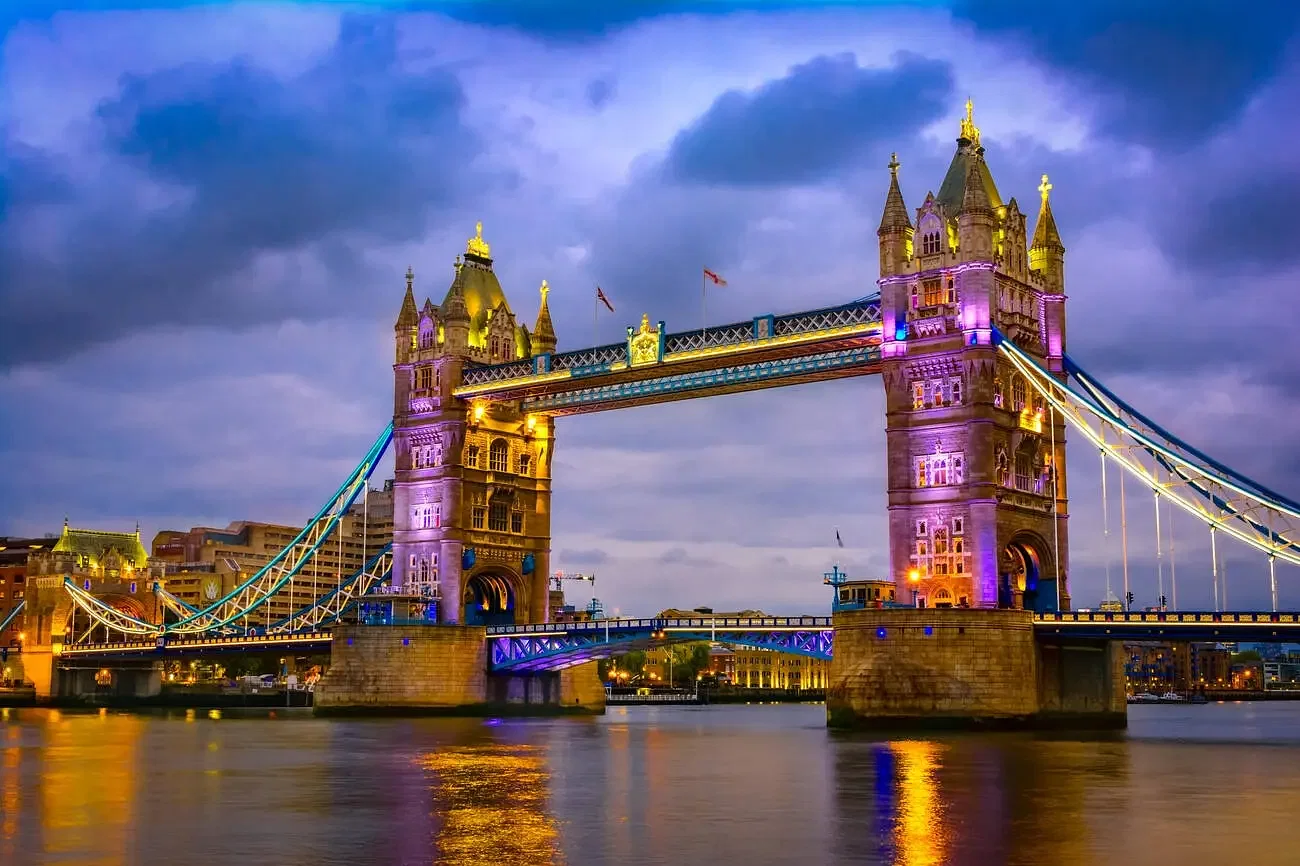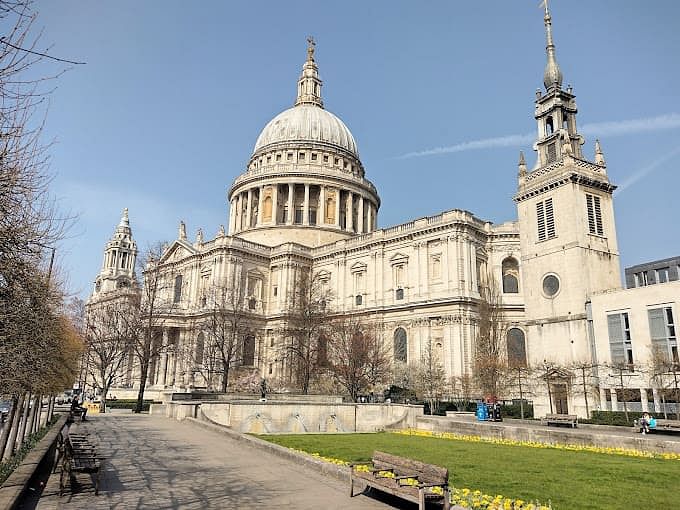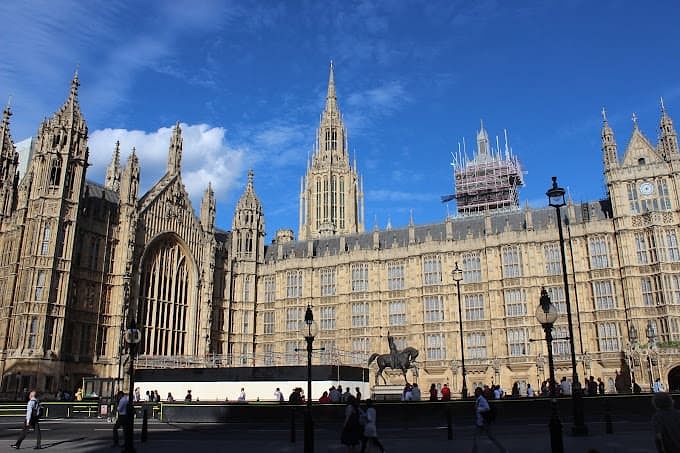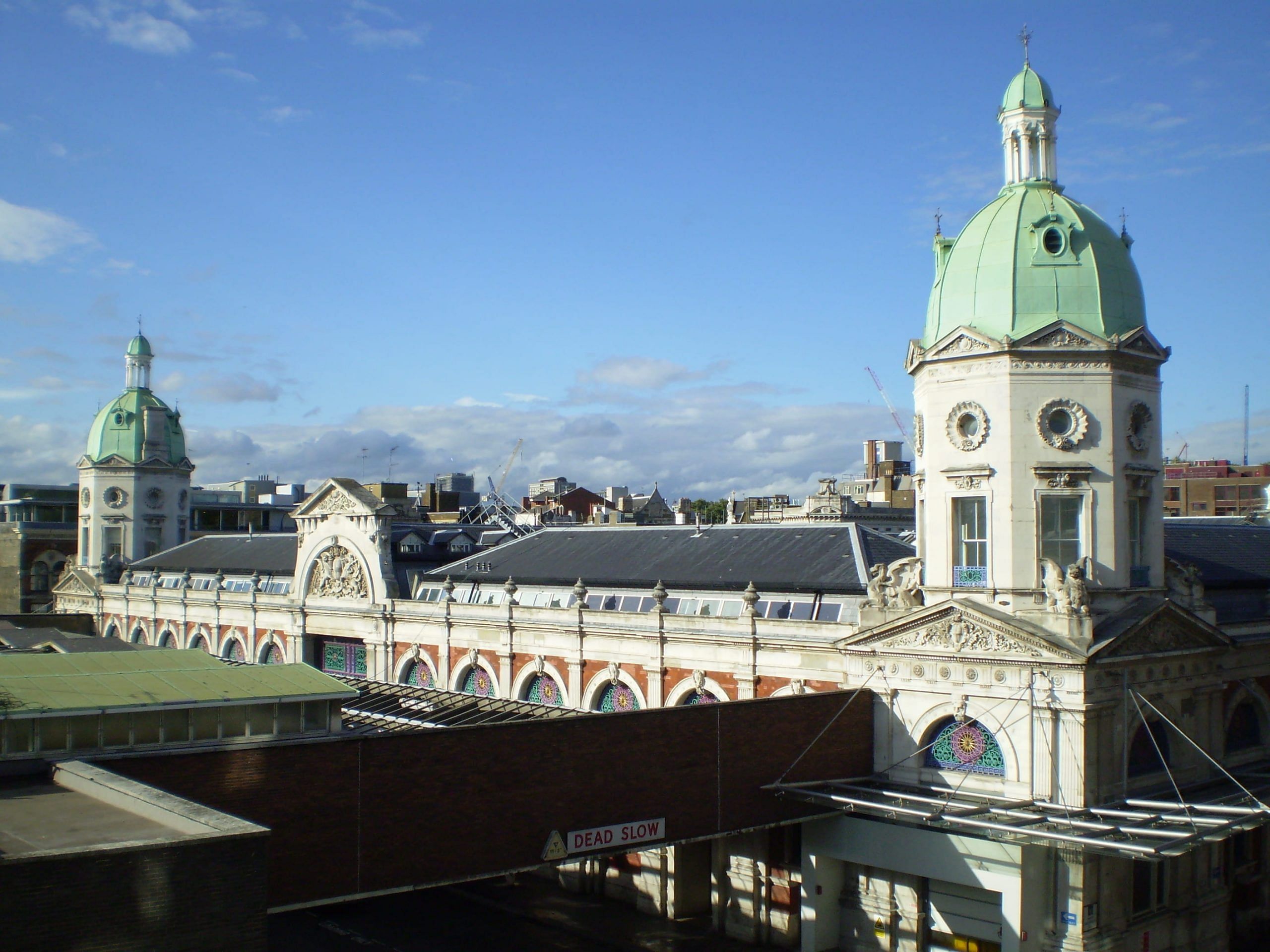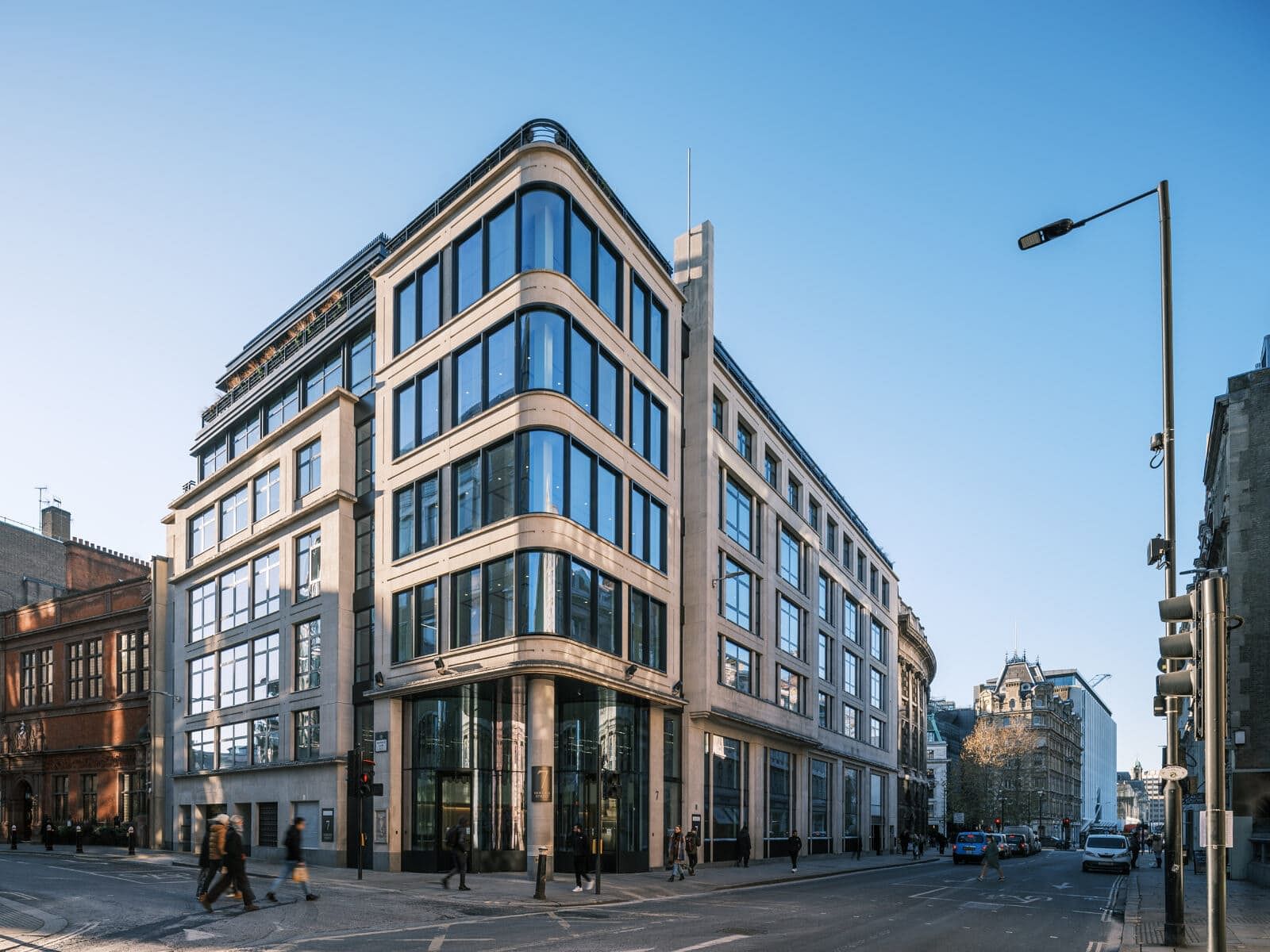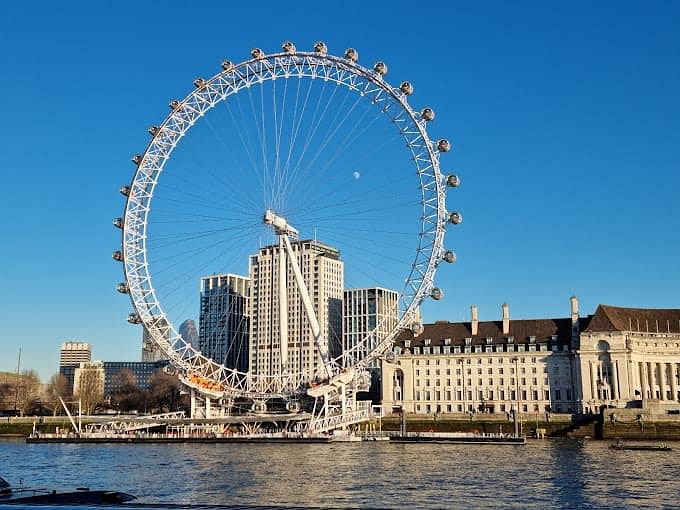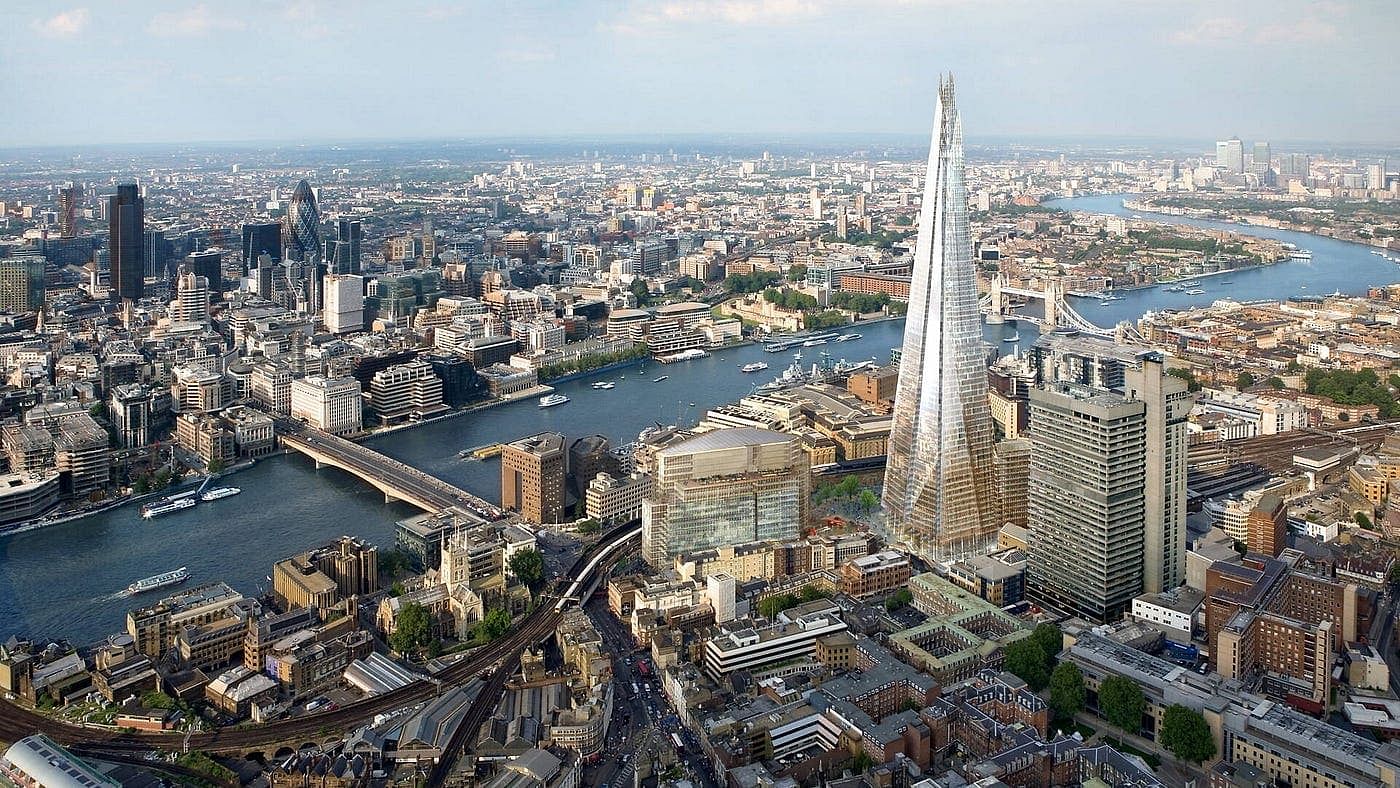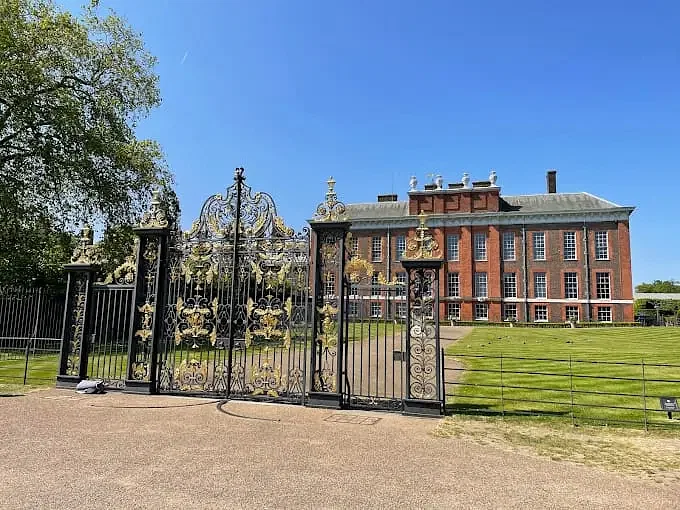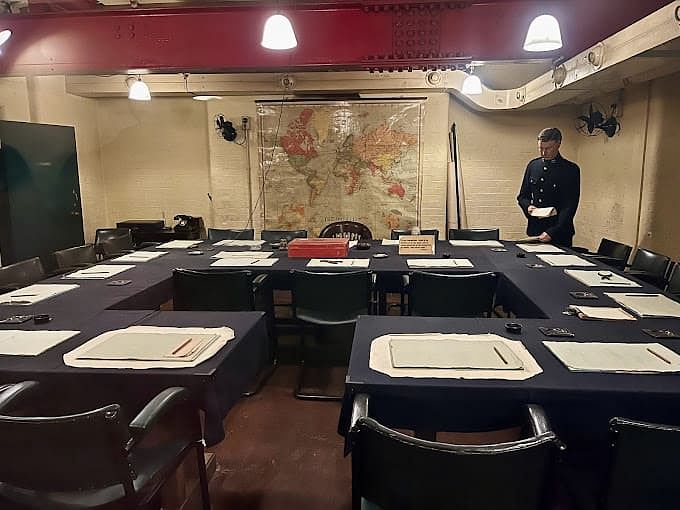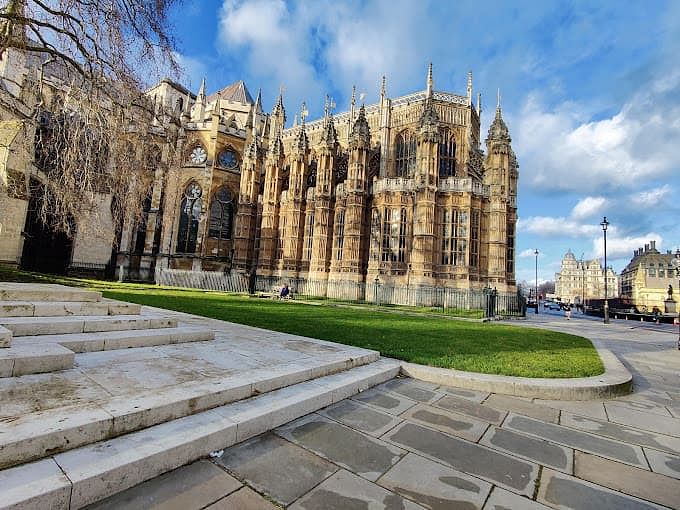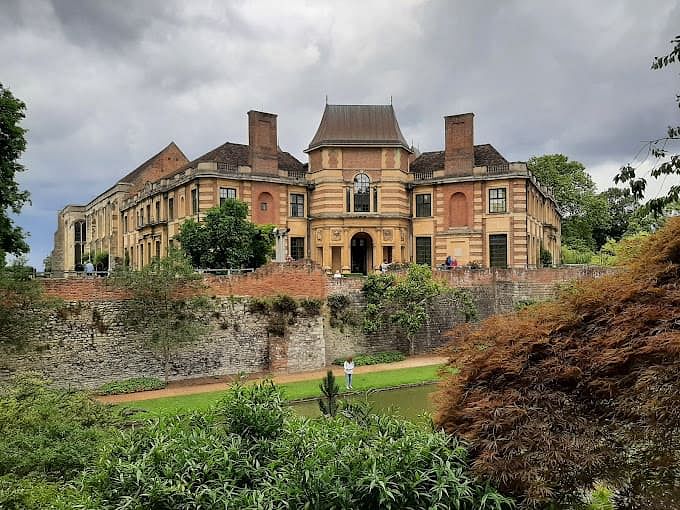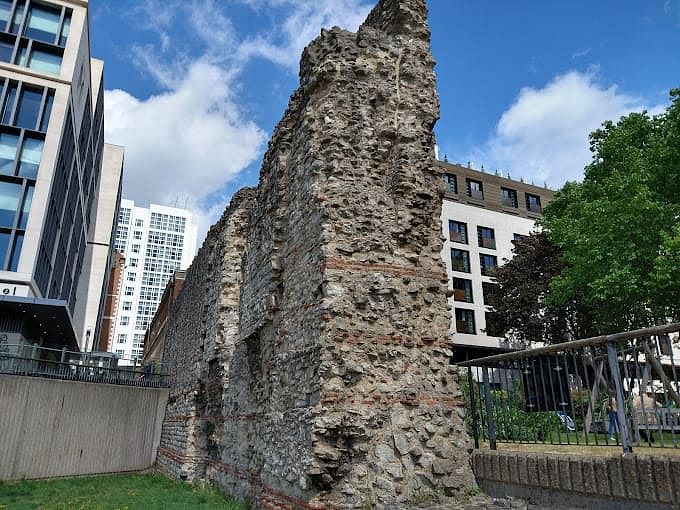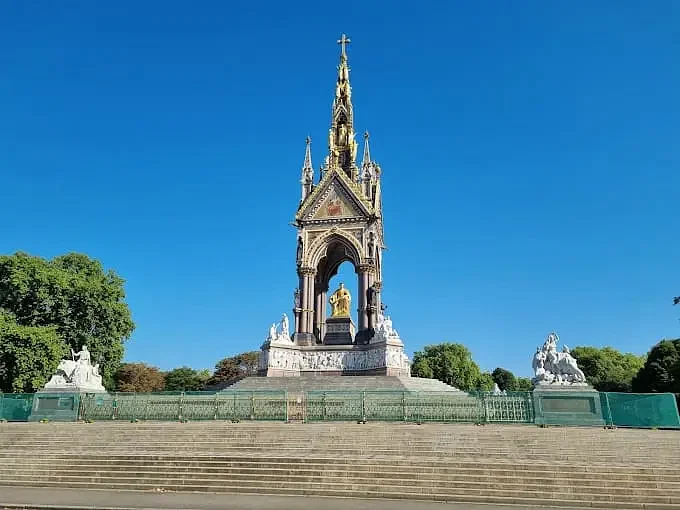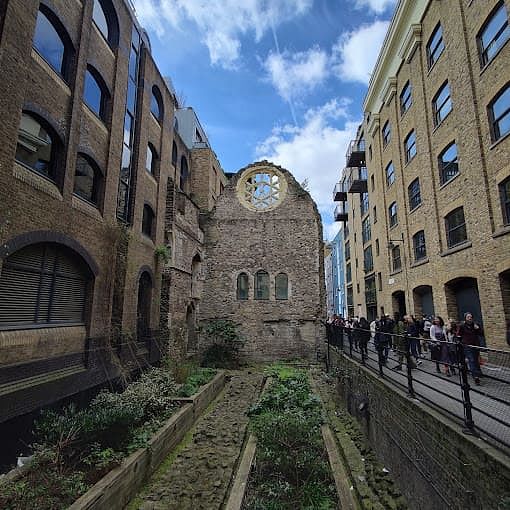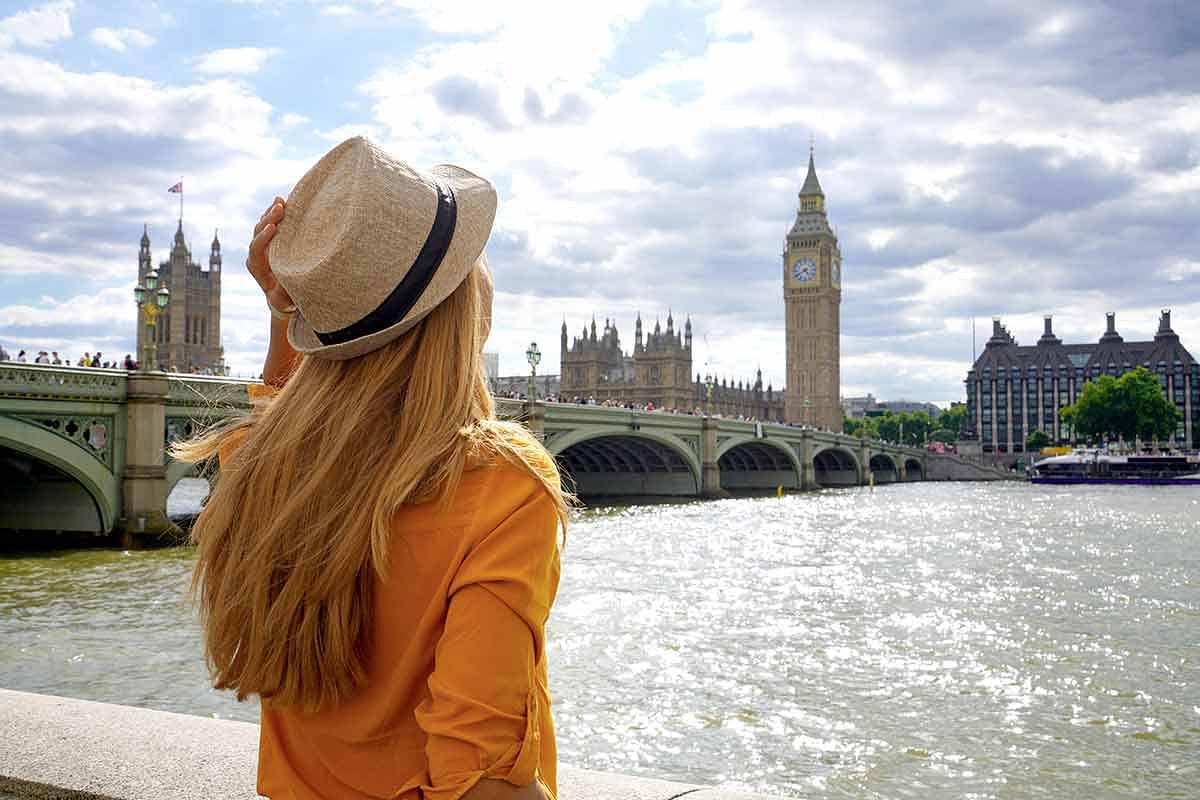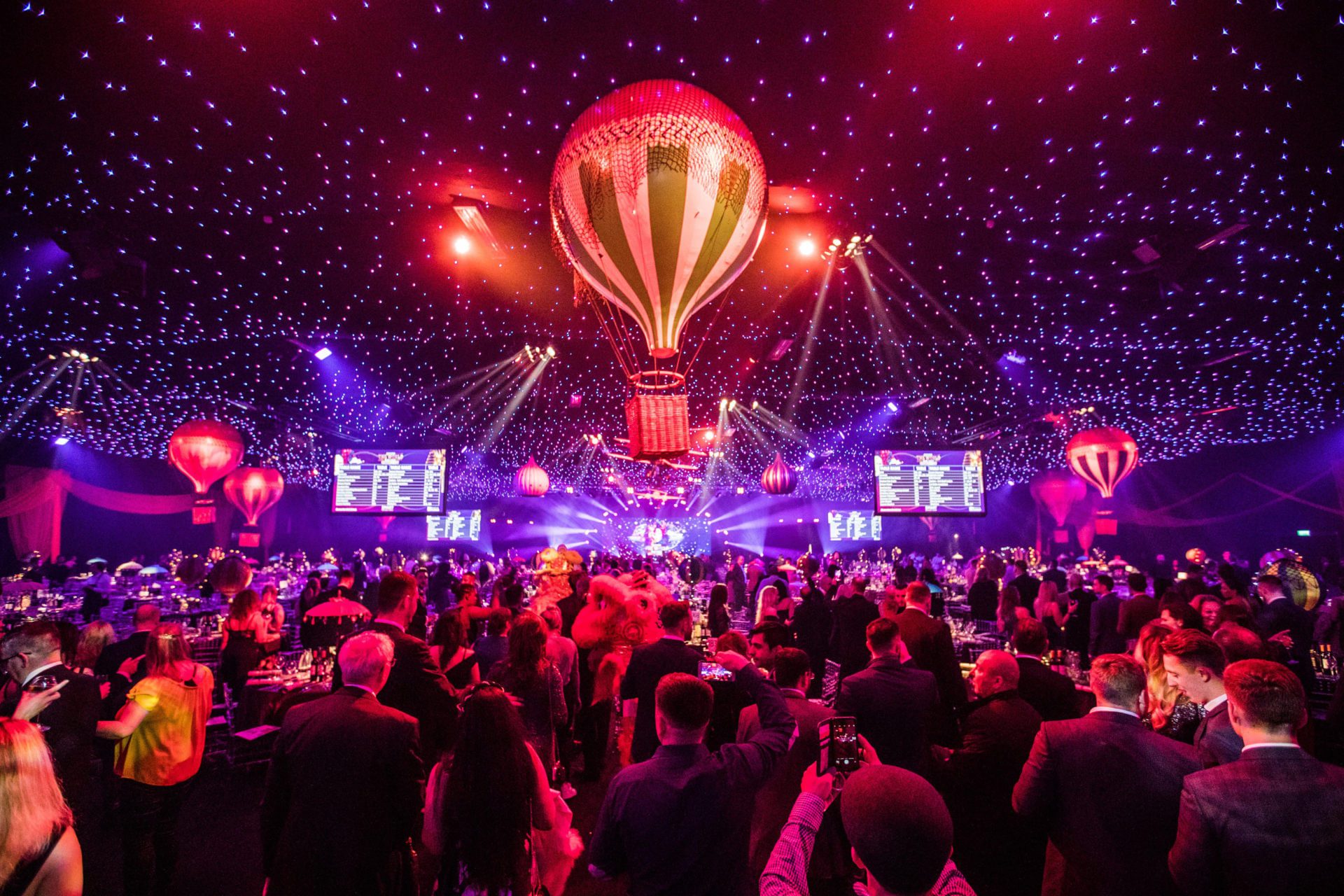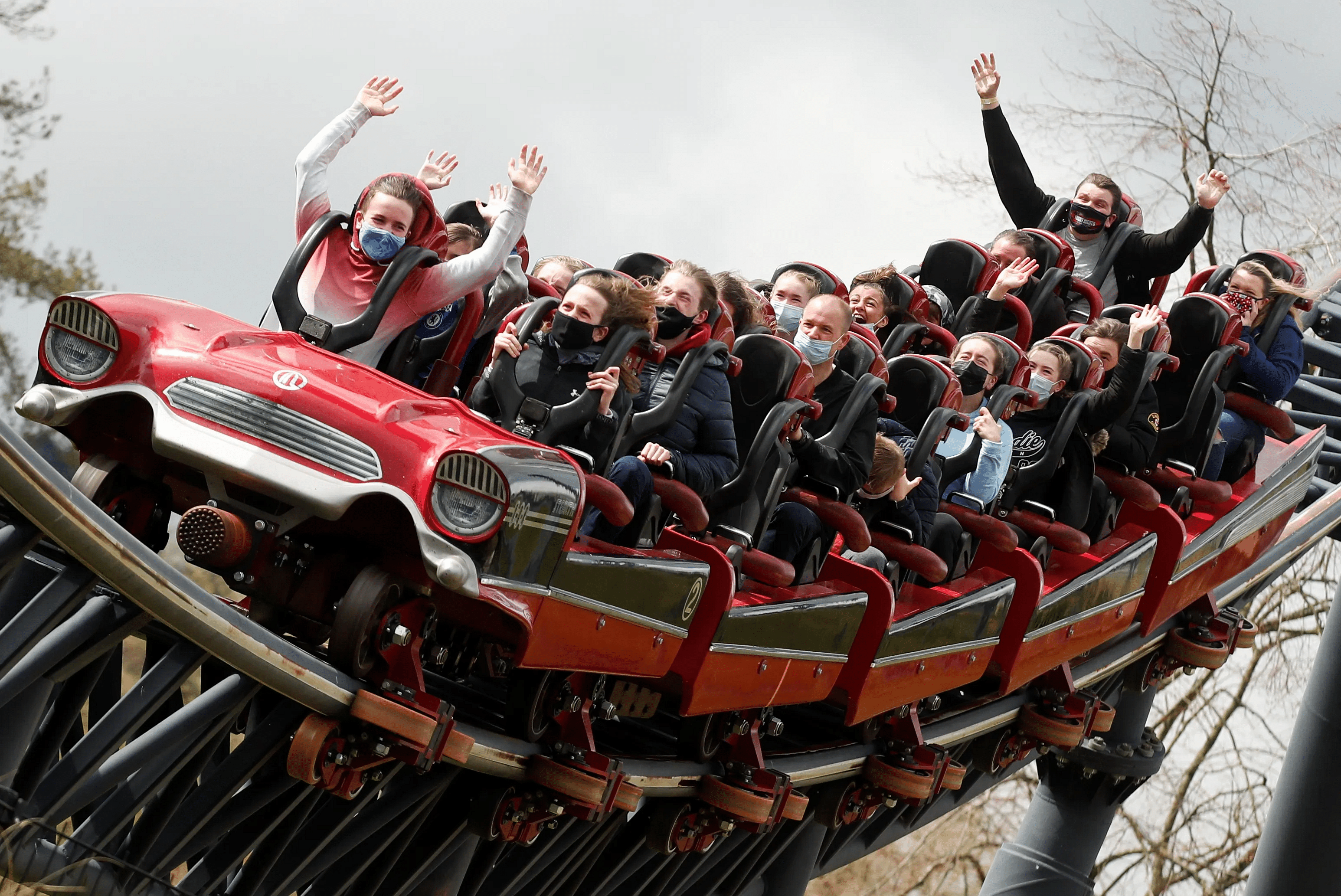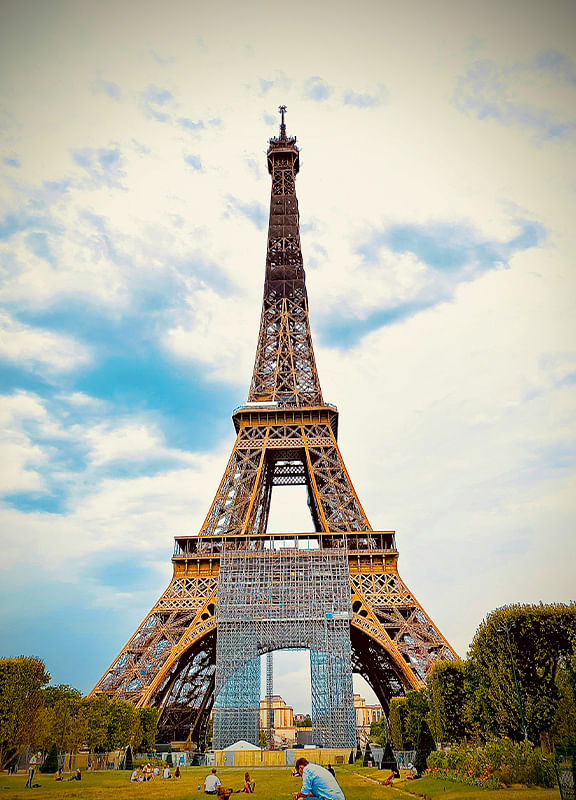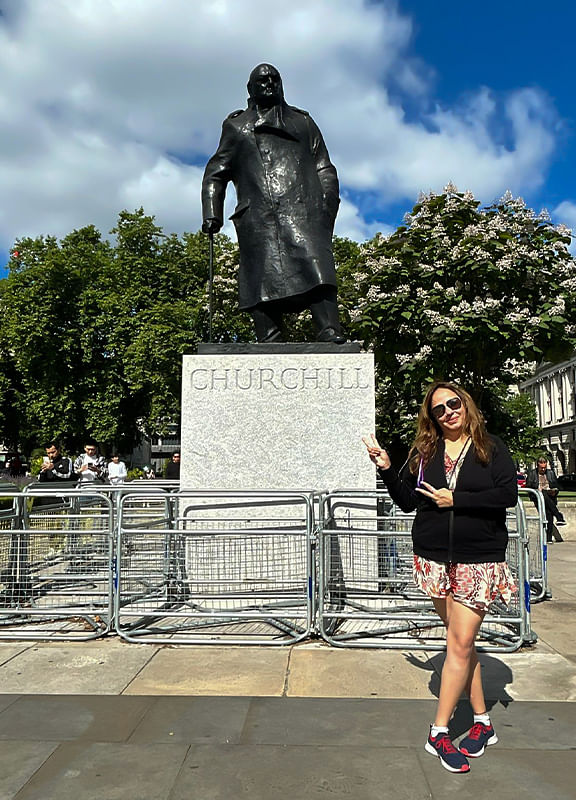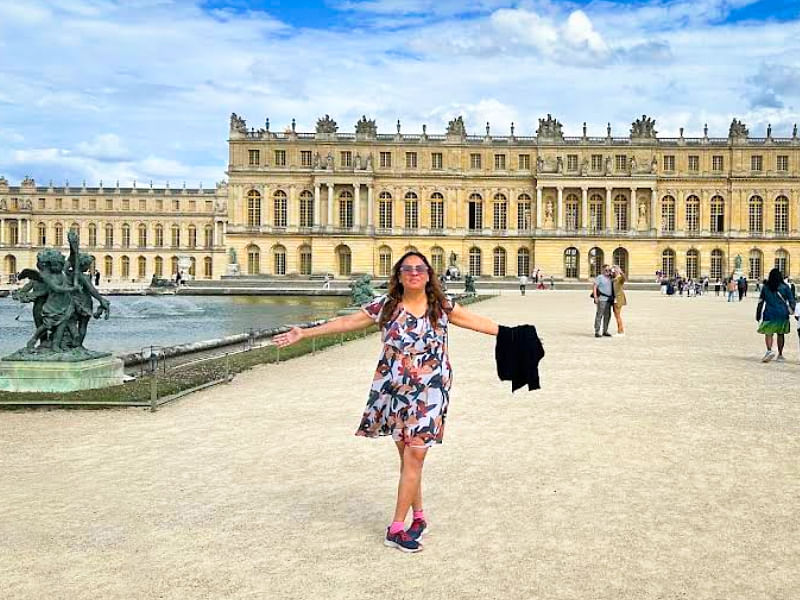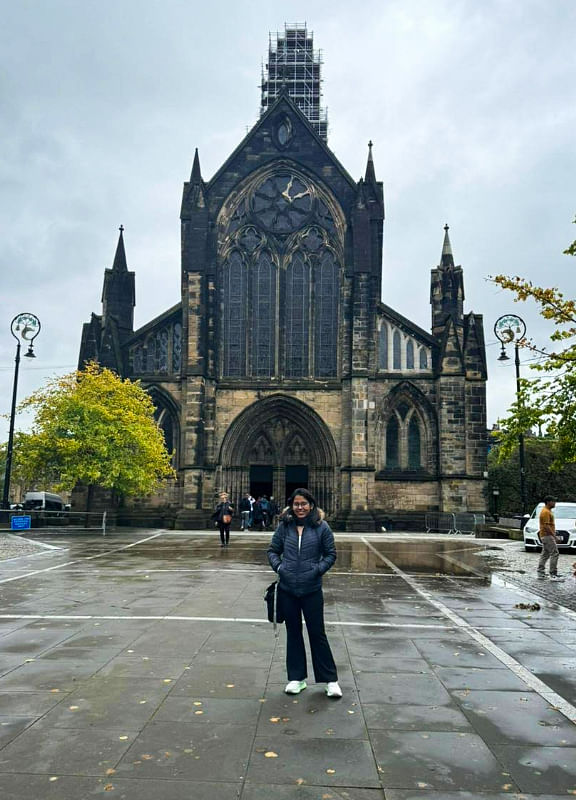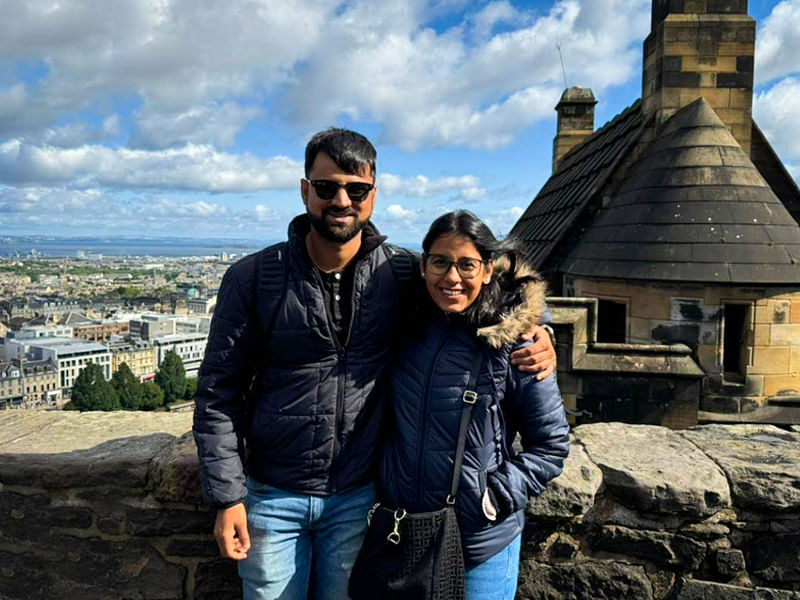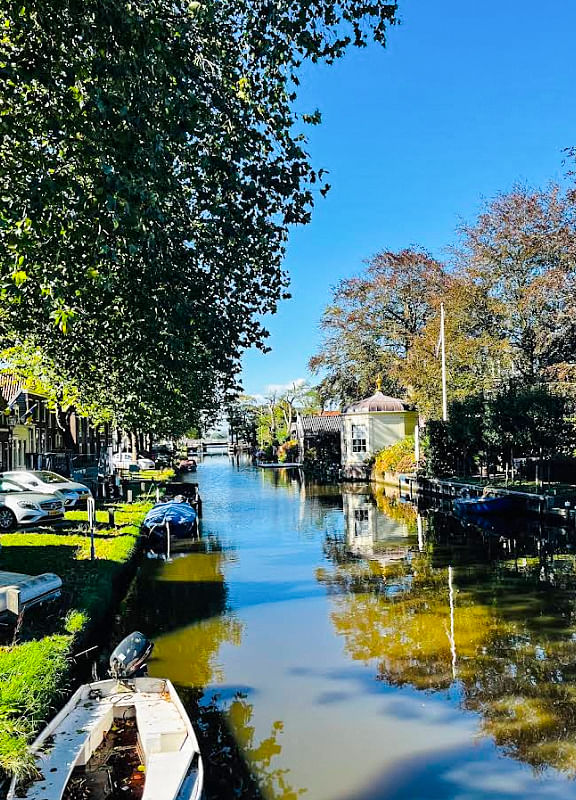London is a city filled with stories of the past, where every street corner holds a piece of history waiting to be discovered. From grand palaces to ancient ruins, the capital of England is a storehouse of historical wonders on your Europe Tour .
One of the Historical Places in London is the Tower of London, a fortress that has stood for over a thousand years. Once the Royal Palace became a prison, it was infamous for prisoners like Anne Boleyn and Guy Fawkes. Today, it houses the crown jewels, showcasing the grandeur of the British monarchy.
You have got famous historical places to visit in London as the Tower Bridge, which stands just across the River Thames, symbolising Victorian engineering. Visitors can explore with high-level walkways and enjoy the views of the city.
No visit to London is complete without seeing Big Ben, the name for the great bell of the clock at the north end of the Palace of Westminster. Standing tall beside the River Thames, this iconic Clock Tower has chimed for over 150 years, marking the passage of time in the heart of the city.
Top 20 London Historical Sites
Here is a list of top London historical monuments that you must visit on your trip:
- The Tower of London
- Greenwich
- Westminster Abbey
- Trafalgar Square
- The Temple of Mithras
- Buckingham Palace
- Tower Bridge
- St Paul’s Cathedral
- Palace of Westminster
- Smithfield
- Newgate
- The London Eye
- The Shard
- Kensington Palace
- Churchill War Rooms & Museum
- Jewel Tower
- Eltham Palace
- London wall
- Albert Memorial
- Winchester Palace
The Tower of London is one of the most iconic London historical sites and also one of the mandatory historical places in London that needs to be visited. Originally built by William the Conqueror in the 11th century, it has served variously as a royal palace, a prison, and a treasury. Inside the Tower of London, you will discover a royal palace, extensive Armoury, and a formidable fort.
You can check into the king’s bedroom and clear your doubts as to how royalty would have lived in those times. The crown jewels are sure to leave you in awe, making it one of the best historical places to visit in London. Don’t try to click pictures unless you want to spend the rest of your tour in Royal Prison. The tower was home to many animals long ago. Keep an eye out for six ravens, the Tower Guardians.
- Location: London EC3N 4AB, United Kingdom
- Timings: Tue-Sat(9:00 a.m. to 5:30 p.m.) Sun-Mon(10 a.m. to 5:30 p.m.)
- Entry Fees: Adults(18-64) ₹3500; Children(5-17) ₹1900; Free for kids below 5
Located in southeast London, the name Greenwich has Anglo-Saxon origins, meaning ‘green port’, and was controlled by the Danes in the 11th century. Greenwich Palace, first called Bella Court and later Placentia Palace became a favourite for royalty.
Henry IV wrote his will from Greenwich and it was the birthplace of Elizabeth of York, Henry VIII, Mary I, and Elizabeth I. In 1675, the building of the Royal Observatory began and in 1694, Queen Mary created the Royal Naval Hospital. Today, Maritime Greenwich is a UNESCO World Heritage Site and well worth a walking tour.
Suggested Read: Adventure Activities in London
Westminster Abbey is one of the most iconic and historically significant religious buildings in the United Kingdom and a mandatory historical places in London. One of London’s most important UNESCO World Heritage sites, Westminster Abbey was originally founded as a Benedictine monastery in the 10th century and has been the coronation church since 1066.
Countless monarchs have been buried here and it is also the site for many royal weddings and other ceremonies. Guided tours are available, providing insights into the abbey’s significance and stories behind its many features. Westminster Abbey remains an active place of worship, hosting daily services, special events, and concerts.
- Location: Deans Yard, London SW1P 3PA, UK
- Timings: Mon-Fri(9:30 a.m. to 3:30 p.m.); Sat(9:00 a.m. to 3:00 p.m.)
- Entry Fees: ₹2900 for adults; ₹1300 for children between 6-17
In modern times, we know Trafalgar Square for the National Gallery and Nelson’s Column, but it’s also one of London’s most historical places in London. Trafalgar Square was once the site of the King’s Mews, where Edward I is believed to have housed his royal hawks.
In the 17th century, during the Civil War, this area became a prison and over 4500 Cavalier prisoners were held here. It was only in 1830 that the area was cleared as part of John Nash’s Charing Cross Improvement Scheme, becoming known as Trafalgar Square in 1835. You absolutely cannot miss out on this London historical monuments.
It was long believed that a hidden temple devoted to the Persian God Mithras was buried deep within the London streets. And, in the aftermath of the extensive bombing of the City of London during World War II, the temple was finally uncovered. Believed to date back to the 2nd century and Roman England, the Temple of Mithras was the meeting place for devotees of a religion called the Mysteries of Mithras. It is among the best historical places in London.
Buckingham Palace is not only the official residence of the British monarch but also a symbol of the nation’s monarchy and heritage, and a must-visit Historical place in London. When you look at the spectacular building, check out the flagpole on the top, and you will find out why it is said to be one of the top historic sites in London. When it flies day and night, it implies that the Queen is at home. It is one of the oldest places to visit in London and also quite popular.
If you are lucky, you might catch a glimpse of her or other members of the royal family on the central balcony. When the Queen is away, especially when she visits her summer Palace in Scotland, you may visit the Queen’s Gallery and staterooms. It often called one of the hidden historical sites in London because it is not always accessible. You can also take a break from exploring historic sites in London by hanging out in the vast variety of cafes in London.
- Location: London SW1A 1AA, United Kingdom
- Timings: Jul-Aug(9:30 a.m. to 7:30 p.m.); Sep(9:30 a.m. to 6:30 p.m.)
- Entry Fees: ₹2400 for adults; 1300 for Children
Suggested Read: Best Local Food in London
Tower Bridge is an iconic structure that you can simply admire from the outside. Be sure to walk over the bridge too! It’s also possible to visit inside, where you can see Victorian engine rooms or walk over the glass walkway and admire nice views of the river and the city. Also, if you decide to visit the Tower Bridge, be sure to get a timed entry ticket in advance. Suggesting some of the best treks in London for your next visit.
St Paul’s Cathedral is an iconic symbol of the London skyline, a masterpiece of architecture, a place of worship, and best Historical places in London. Designed by Sir Christopher Wren after the great fire of London in 1666, it stands as a testimony to resilience and renewal. The cathedral’s stunning dome is one of the largest in the world and dominates the cityscape. Visitors can explore the intricately decorated cathedral including the whispering gallery and crypt where notable figures are buried including Sir Christopher Wren.
The Palace of Westminster was built by Edward the Confessor in the Middle Ages, later becoming the home of William the Conqueror and his court, a tradition that endured for 400 years until the reign of Henry VIII. It was William the Conqueror’s son who built Westminster Hall, and it was here that the first ‘model’ Parliament was gathered by Edward I. The Palace of Westminster is not only one of the historic places in London, but most striking. Some of the best hotels & Resorts in London are present in this area.
- Location: London SW1A 0AA, United Kingdom
- Timings: Mon-Fri(9 a.m. to 5 p.m.) Sat-Sun(Closed)
- Entry Fees: Adults ₹3300; Young Adults(16-24); Children ( ₹1700 )
A place of execution for over 400 years, Smithfield took its name from ‘smooth field’, being a grassy space just outside the city walls. A horse market in the Middle Ages, Smithfield was also a prime location for battles, tournaments, and merrymaking alike, hosting the debauched Bartholomew Fair for over 700 years. Rebels, criminals, witches, and heretics were burned, roasted, or boiled alive at Smithfield before the gallows were moved to Tyburn in the 15th century.
The area became a cattle market, and conditions only worsened, with cattle slaughtered in the market and animal entrails filling draining channels. The London Central Meat Market opened in 1868 and exists to this day.
A prison since the 12th century, Lord Mayor of London and English merchant Sir Richard Whittington aka Dick Whittington of the popular folk tale left a legacy in his will to improve Newgate in the 15th century, only for it to burn down in the Great Fire of 1666. The new prison paid homage to Dick Whittington and his cat in the form of a statue today, you can see the Whittington Stone at Highgate Hill. The inside of the prison, however, was far less appealing. A breeding ground for typhoid and all manner of diseases, and devoid of daylight, prisoners would sleep on the cold, hard stone.
The prison was rebuilt from 1770 to 1778. Shortly after, over 300 prisoners escaped during the Gordon Riots before the prison was burned to the ground. Built again in 1780-1783, Newgate took over from Tyburn as the place for public hangings, with a scaffold erected in Old Bailey, in front of the prison, making it one of the historical buildings in London.
- Location: London, UK
- Timings: NA
- Entry Fees: Free Entry
Suggested Read: Homestays in London
Offering unparalleled views of the city skyline, the London Eye has become a modern icon since its opening in 2000 and a place to visit in London. A ride on this giant ferry will provide a beautiful view of landmarks such as the St. Paul Cathedral, the Shard, and the Thames River. Sunset or nighttime rights of a particularly beautiful experience.
The largest structure in Europe, the glass capsules will hoist you 443 feet above the Thames. We hope you’re not afraid of heights. Even if You Are, we would recommend you take the ride for an experience you will cherish forever. While the wait in line can be long, a 30-minute ride on the London Eye is worth the wait. Some of the popular Airbnbs in London are situated in this area.
Another one of the historical buildings in London is The shard, which is an architectural marvel that stands as a beacon of modern-day innovation in the heart of London. Designed by architect Renzo Piano, this gleaming glass skyscraper pierces the skyline at 310 m, making it the tallest building in the United Kingdom and the tallest in Europe.
Completed in 2012, the shard houses a mix of offices, luxury residences, restaurants, a hotel, and an observation deck offering unparalleled views of London. Visitors can see the 68th, 69th, and 72nd floors where they can see the stunning views that stretch for miles in every direction, making it a historic attraction in London. Most of the best restaurants in London are situated in this area.
It is among the most famous Historical places in London. Kensington Palace stands out as a royal residence. Set in Kensington Garden, the Palace has been home to the British royal family since the 17th century. Currently, it is the official London residence of Duke and Duchess of Cambridge and the state rooms are open to the public. Also, you will spot some paintings and artifacts from the Royal collection, which makes it one of the famous London historical sites.
15. Churchill War Rooms & Museum
Falling under the five branches of the Imperial War room, the display served as a command center for the British government during the Second World War. The museum will take you on a journey to explore Churchill’s life along with audiovisual technology. In 2006, the Churchill Museum won the Council of Europe Museum Prize.
Welcome to one of the oldest places to visit in London, The Jewel Tower. It is another surviving element of the Palace of Westminster, Jewel Tower, which is a 14th-century architectural masterpiece. Constructed in 1365 to 66, the monument was also known as the King’s Privy Wardrobe or Jewel House. Now this place holds delicate historical artifacts like Iron Age swords, English Romanesque sculptures, etc., making it one of the famous London historical sites.
Former royal residence of the crown estate, Eltham Palace is a masterpiece of modern design. Designed by the Swedish designer Rolf Engstromer, the Eltham has an Art Deco style. This place holds memories of a childhood home to King Henry VIII. In this palace, You will come across lavishly built dining rooms, drawing rooms, Virginia Courtauld’s circular bedroom, and much more.
Scattered throughout the historical places in London are ancient remains of the city’s former bordering wall, the London Wall. It was built by the Romans and was maintained until the 18th century. In earlier times, the world was 4 km long and enclosed an area of almost 330 acres.
Built in the Gothic Revival style, the Albert Memorial is one of the high-Victorian historical places in London. The memorial commemorates the death of Prince Albert, Queen Victoria’s husband. The Parnassus frieze boasts intricate architectural details of celebrated painters, poets, sculptors, musicians, and architects.
Winchester Palace is a 12th-century palace. It was one of the most important palaces in medieval England, and, earlier, it served as the London residence of the Bishops of Winchester.
Winchester Palace dates back over 700 years and was once developed with a great hall accompanied by an adjoining buttery, kitchen, and pantry. Keep your eyes open for the most striking feature of the palace, the rose window on the top of the west gable.




